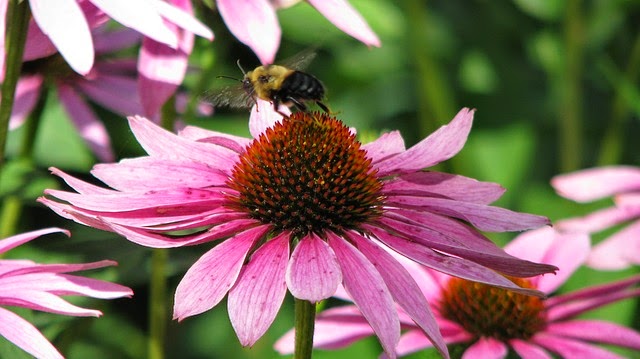Seven
bluebirds and one chickadee fledged in the past week. Two boxes are now empty
and another has what may be a new bluebird nest on top of the old one. The
bluebird nest with the cowbird egg in it remains the same—no bluebird eggs have
been laid, so perhaps the bluebirds got wise to the intruder and went
elsewhere. If there is no change in the cowbird egg by next week, I will remove
it and the nest.
In
four other boxes there are 14 more bluebirds. I did not open three of the boxes
since the young birds are too near to fledging.
The
remaining three boxes have tree swallows in them. Two, I did not open, but as I
passed I could see two tree swallow heads poking out in one, and another in the
second. I could not see into the third box for all the feathers. There were no
parents defending the nest, and as far as I can tell, the mother was not
camouflaged inside. Perhaps next week will provide a clearer view. If not, a
little probing may be in order. (This is the box that was being vandalized two
weeks ago.)






